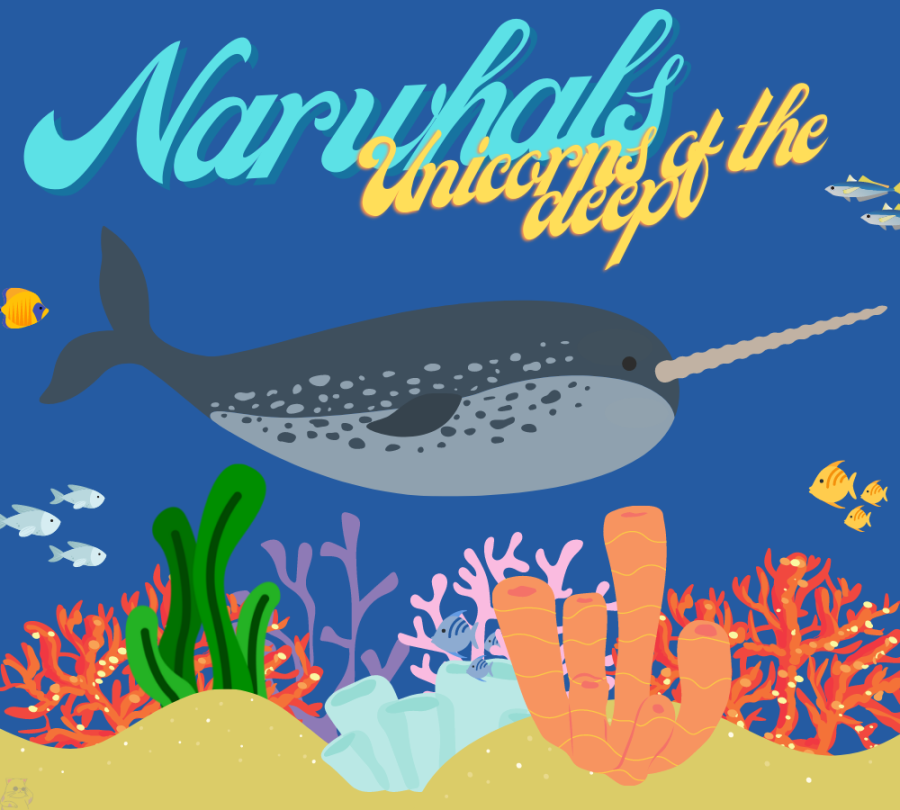Narwhals, otherwise known as sea unicorns, look as if they belong in a storybook, when in truth they really do exist.
Narwhals are a species of whale that live in the waters of Russia, Canada, Greenland, and Norway; otherwise known as the Arctic Ocean. Like all other species of whales, narwhals swim in the ocean but still take up the title of mammal because of their ability to breathe air and give birth to live young, as opposed to fish which lay eggs.
Although this specific species of whale is especially known for the abnormally large horn that juts out of their heads, this appendage may not even classify as a horn at all.
“During their embryonic development, narwhals have the capacity to form 14 teeth, but only two ever develop. In most male narwhals, one of those teeth develops as the tusk, while the other typically remains impacted in the jaw,” Jacob Brogan from the Smithsonian Magazine said.
The tusks on their head, which are in fact overgrown teeth, can grow up to ten feet in length. Almost twice the size of an average woman. The purpose of these tusks, still debated upon today, stuns scientists around the world. Although they all agree on one thing: this tooth helps narwhals survive in their harsh and ever-changing environment.
“Some researchers believe tusks might help the whales survive the harsh and ever-changing conditions in the Arctic.” Daniel Hall from ocean.si.edu said. “Freezing temperatures and shifting ice floes can occur unexpectedly, covering the few breathing holes narwhals rely on to survive. When the weather shifts quickly, narwhals can die from exhaustion and starvation.”
Narwhals fight against the harsh effects of freezing arctic conditions and sea pollution each day. Like all other creatures that live near the North Pole, narwhals also constantly face the dangers of ever-increasing temperatures and melting icebergs.
“Recently, even larger changes have been taking place in the narwhals’ wintering grounds,” Caitlyn Kennedy said. “Satellite data have revealed a 9 to 11 percent decline in sea ice extent per decade in the Baffin Bay and Davis Strait areas since 1979. Scientists have also documented the earlier springtime breakup of ice in Baffin Bay.”
Though the odds never seem in their favor, narwhals have gained the recognition as one of the most resilient animals on the planet. They have adapted to survive in one of the harshest environments on the earth and still manage to captivate the hearts of many.
“It’s still just unbelievable that they can live in such an extreme environment and be successful,” Kristin Laidre said. “There are really so few animals that are able to live out there and thrive.”


